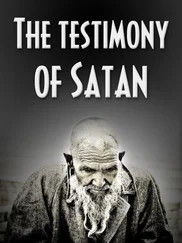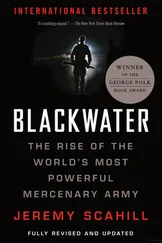Fazul claimed that his team participated in the downing of the Black Hawks in 1993, but al Qaeda failed to entrench itself in Somalia as the warlords divided up the country. Most of them had no use for bin Laden or foreigners. “The primacy of tribalism in Somalia ultimately frustrated al-Qa’ida’s efforts to recruit long term and develop a unified coalition against foreign occupiers. Al-Qa’ida mistook its call for jihad in Afghanistan as a universal motivator for which Muslims in Somalia would join at an equal rate,” noted a study conducted at West Point Military Academy’s Combating Terrorism Center. “In 1993 Somalia, this call fell on somewhat deaf ears as survival against local competitors trumped jihad.”
So Fazul turned his attention to Kenya.
The embassy bombings in Kenya and Tanzania took five years of careful planning and preparation. Working with al Qaeda operative Saleh Ali Nabhan, Fazul directly coordinated the Nairobi bombing, renting the house that would serve as a laboratory to manufacture the explosives for the job. During this time, Fazul became a rising star within al Qaeda. He became one of its prized couriers, funding cells throughout East Africa and, for a period, relocated his family to Khartoum, Sudan, where bin Laden was building up al Qaeda and preparing to declare war on the United States. By 1997, when bin Laden officially announced al Qaeda would attack US interests, Fazul had already left Sudan and was outraged that he learned it from CNN. The announcement resulted in raids, including on the home of one of Fazul’s closest associates who was preparing the embassy bombing in Nairobi. In the end, despite several close calls with the Kenyan authorities, the embassy hits were a categorical triumph, catapulting bin Laden and al Qaeda to international infamy. It also put Fazul on a path to becoming the chief of al Qaeda’s East Africa operations.
After the Nairobi bombings, the United States aggressively tried to freeze the assets of bin Laden and al Qaeda. In response, bin Laden sought new revenue streams and put Fazul in charge of an ambitious operation to penetrate the blood diamond market. From 1999 to 2001, Fazul would largely operate out of Liberia under the protection of its dictator, Charles Taylor. In all, al Qaeda took in an estimated $20 million in untraceable blood diamond money, much of it from the killing fields of Sierra Leone. By that point, Fazul was a wanted man, actively hunted by the US authorities, and al Qaeda spent huge sums of money to keep him safe. He had become a player.
In 2002, Fazul was dispatched to Lamu, Kenya—ironically just a stone’s throw from the eventual JSOC base at Manda Bay. From there, he organized the Mombasa attacks on the Paradise Hotel and the Israeli aircraft. Some of the operatives for that mission began training in Mogadishu, and Fazul would regularly travel to Somalia to check in on their progress. During this period, he worked extensively with Nabhan. Following the Mombasa attacks, Fazul traveled discreetly between Kenya and Somalia. The CIA always seemed to be a step behind him. In 2003, they contracted Mohamed Dheere, who was part of the CIA’s warlord alliance, to hunt him down. Qanyare also told me that Fazul’s photo was shown to him as early as January 2003 by US intelligence agents. Qanyare claims that he showed US counterterrorism agents houses used by Fazul and Nabhan and gave them GPS coordinates, but that the US agents were reluctant to pull the trigger on any targeted killing operations in Mogadishu, saying they preferred for the warlords to capture them. “They were worried that innocent people would die because of their action,” Qanyare told me. “But, to arrest them is not easy because they got protection from other local al Qaeda people.” The warlords failed to catch Fazul or Nabhan.
In August 2003, while the CIA was deep in its hunt for Fazul and other suspected terrorists in East Africa, an e-mail address the Agency had linked to al Qaeda was traced to an Internet café in Mombasa. Working with a CIA case officer, Kenyan security forces raided the café and began to arrest two men who were at a computer and were logged in to the suspect e-mail account. As they led the men to a police wagon, the larger of the two suspects shoved the smaller one away, pulled out a grenade and blew himself up. Special Operations sources later told military journalist Sean Naylor that the larger man was a “suicide bodyguard” and that the smaller man, whom he was protecting, was in fact Fazul. “Security forces converged on the scene, but Fazul was too smart for them,” Naylor reported. “He ran into a mosque and emerged disguised as a woman, wearing a hijab or some other form of Islamic facial covering.” US intelligence later searched the apartment Fazul and his bodyguard were using in Mombasa and discovered an apparatus for forging passports and visas.
In 2004, US intelligence claimed to have intercepted communications from Nabhan indicating that al Qaeda was, once again, planning to attack the US Embassy in Nairobi using a truck bomb and a chartered plane. By then, US counterterrorism officials had declared Fazul and other members of al Qaeda’s Somalia cell “among the most wanted fugitives on the planet,” saying Fazul was “a master of disguise, an expert forger and an accomplished bomb builder” who was “maddeningly elusive” and “the most dangerous and…most sought after” al Qaeda figure in Somalia.
In Mogadishu, Fazul hooked up with Aweys and Aden Hashi Farah Ayro, a Somali militant who had trained in Afghanistan with al Qaeda, and other former comrades from Al Itihaad, as they began building up al Shabab. He and Nabhan served as al Qaeda’s chief emissaries to the group. At that point US intelligence was not even aware of the group’s name and referred to it simply as “the special group.” Al Shabab’s training base, the Salahuddin Center, was situated on the grounds of a former Italian cemetery that had been rather gruesomely desecrated. It was heavily fortified and offered recruits the opportunity to watch jihadist videos from Afghanistan, Iraq and Chechnya, as well as videos featuring bin Laden. “Once the Salahuddin Center was established by al Shabab, they provided the training and the know-how, they brought in the experience that was needed,” said Aynte.
When the Islamic Courts Union began to emerge as a force that could expel the warlords, Fazul ensured that al Qaeda would be a part of it. “Fazul and Nabhan, all of the foreigners were with us,” recalled Madobe. “At the time they were engaged in making connections and coordination which we believed to be part of the jihad, and we knew that they were members of al Qaeda.” Madobe said he was not concerned about Fazul and the other al Qaeda figures when they began appearing around the ICU. Al Shabab, he asserted, had very little backing from Somalia’s biggest clans and were minor players compared to the more powerful Courts. “They were out numbered by those within the Courts who had positive agendas,” he said. “But I can say the US actions helped boost them.”
AL SHABAB began making a name for itself in 2005 by carrying out a spate of “headline-grabbing assassinations and cemetery desecrations in Mogadishu and other regions,” according to Aynte. In his paper, “The Anatomy of al Shabab,” Aynte alleged that after al Shabab formed “more than [one] hundred people, mostly former military generals, professors, businessmen, journalists and activists were quietly assassinated over the next few years.” He noted that a former al Shabab field commander “said the objectives of the assassinations were twofold: First, it was a deliberate, preemptive attempt to eliminate dissent and potential roadblocks. Second, it was designed to inject fear and terror in the hearts of the elite class in Mogadishu, who at the time wielded significant influence by their sheer domination of the business, media and academia.”
Читать дальше












